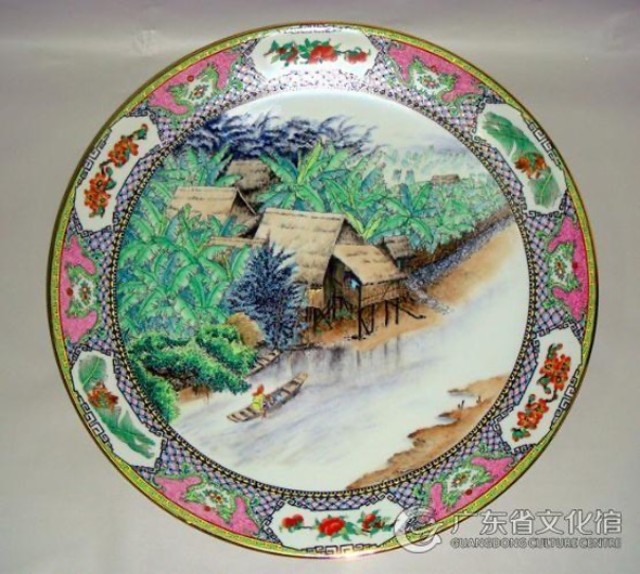Kwon-glazed porcelain
Kwon-glazed porcelain is a type of color-glazed porcelain. It originated during the reign of Emperor Kangxi (1654-1722) of the Qing Dynasty (1644-1911) and thus has a history of more than 300 years. It enjoyed great popularity around the world and was exported in large quantities at that time.
Kwon-glazed porcelain features a wide range of themes and bright colors. Its production process consists of drawing a design, selecting porcelain, producing pigment, and then painting and firing the porcelain. It is used to make utensils, furnishings, artwork, toys and religious items.

Kwon-glazed porcelain [Photo/Guangdong Culture Centre]
The decoration of Kwon-glazed porcelain includes sancai (yellow, green and purple), wucan (red, yellow, green, black, brown and blue) and enamel, which is made by fusing powdered glass to a substrate by firing. Painted porcelain with western styles is also popular.
The firing of Kwon-glazed porcelain feature four characteristics that came from the integration of Chinese and western porcelain, as well as unique pigment production techniques, a style derived from Lingnan culture, and rich colors and themes.
As an important representation of Lingnan culture, the firing technique used to make Kwon-glazed porcelain enjoys a high reputation at home and abroad. This manual skill from Guangzhou was recognized as a form of national intangible cultural heritages in 2008.







